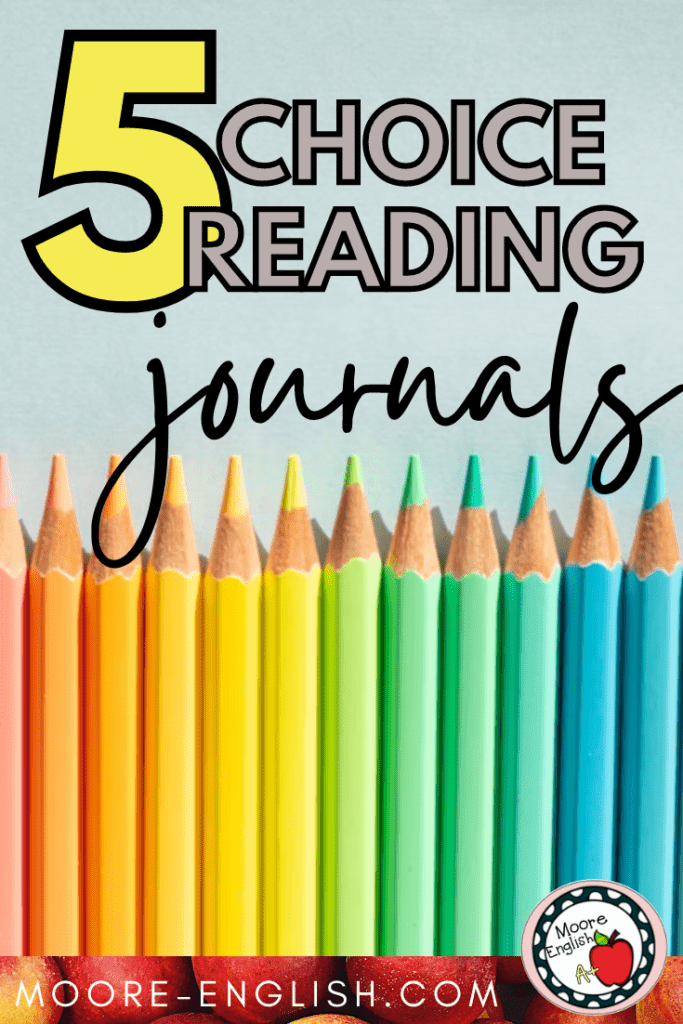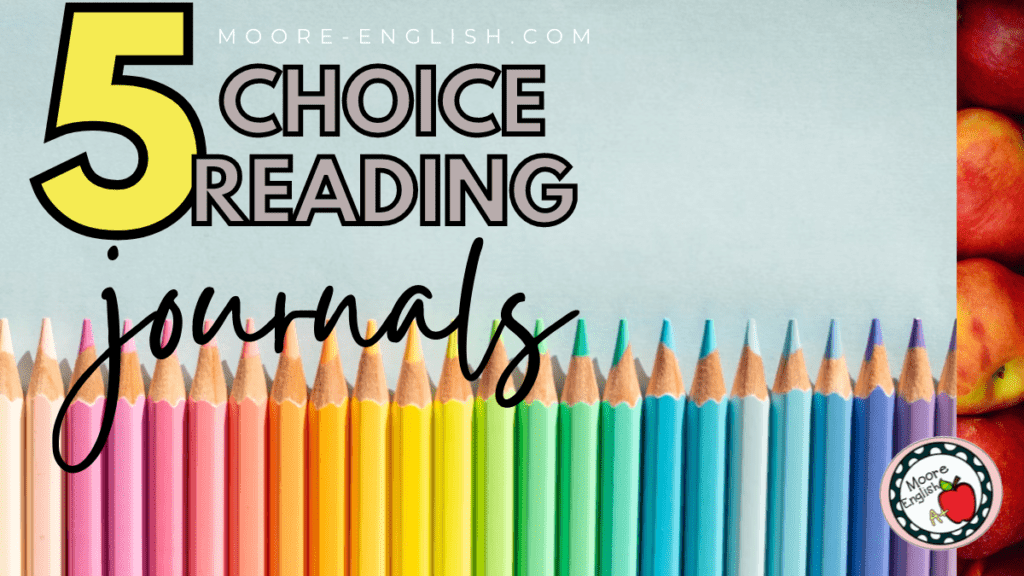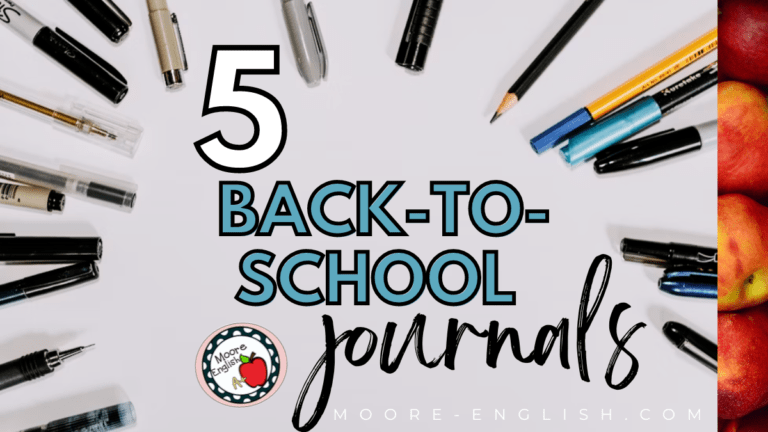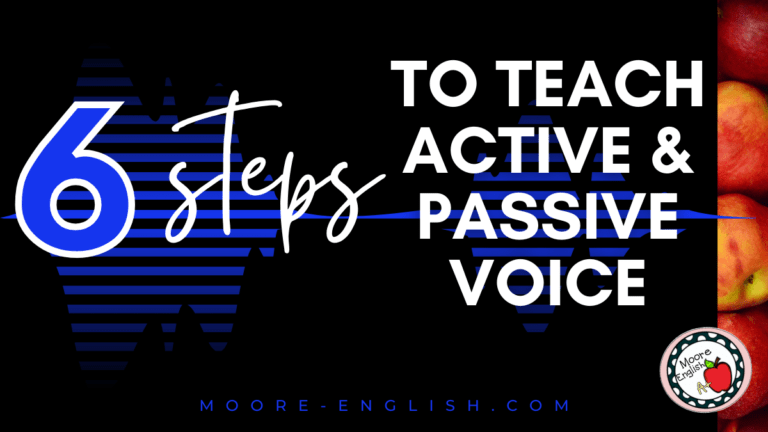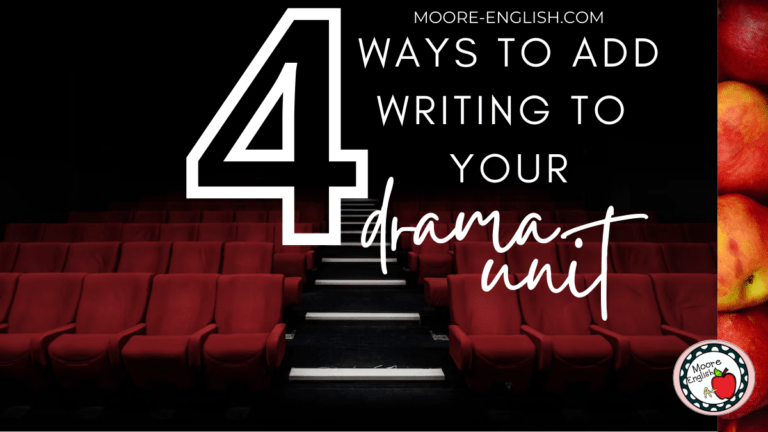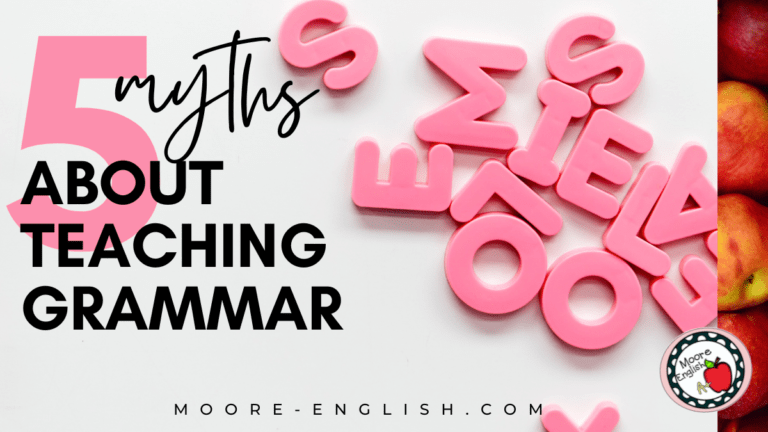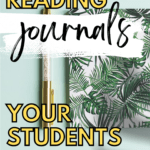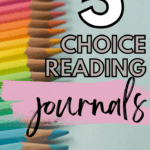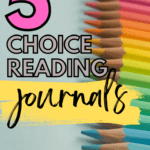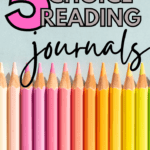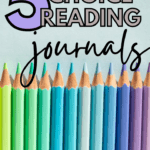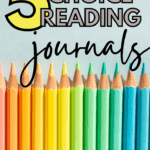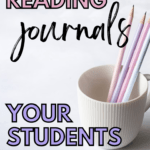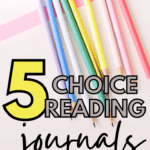For my students, independent choice reading is a regular part of our bell work. Writing about reading is a good processing strategy for students. There are a few other reasons I value choice reading journals:
- This is a good way to engage students in conversations about their reading.
- Choice reading journals can build accountability.
- Journaling is a perfect complement to literary analysis stations.
- I can also tailor the journals to our in-class work, so if we’re studying a specific topic (like characterization), I can ask a question about that topic.
Today, I want to share 5 choice reading journal prompts for quality reflection!
This post this post may contain affiliate links. Please read the Terms of Use.
5 Choice Reading Prompts
Over the years, I’ve tried different choice reading prompts, but these 5 have become favorites. They elicit great conversations among students, engage them as writers, and frame their reading in a different way.
- If you had to describe your book in one word, what word would you choose? Why?
- A travel agent is looking for recommendations about vacation spots for their clients. Should they recommend the setting of your book? Why or why not?
- Yearbooks often feature senior superlatives like “Best Smile” or “Most Likely to Succeed.” Which superlative would your protagonist or antagonist win? Why?
- The local school board is considering a policy that would ban your book. Write a letter to the school board in which you defend your book. (A perfect prompt for Banned Books Week!)
- What makes a text “literature”? What are the characteristics of “literature,” and has your book achieved this status? Why or why not?
Grab these 5 prompts and 22 more with my Choice Reading Journal Prompts. I love these because I can mix and match as needed, edit or tweak the directions quickly, and even assign them in Google Forms!
6 Journaling Alternatives
Choice reading journals may not be your favorite option for choice reading, so here are some alternatives that still provide students with a chance to showcase their work.
- Early on in a choice reading cycle, students can complete First Impressions Book Reviews, which they can reference throughout their reading. These are fun to use in cycles of think-pair-share so students can encounter a variety of new books.
- Similarly, students can also use these Coloring Bookmarks to set their own goals for choice reading. Not only do students enjoy the design work involved, but they like being able to update their bookmarks as they move toward their goal.
- Ask students to write letters to characters from the book or to the author. A fun variation on this is to ask students to write letters from the protagonist to the antagonist. I use these easy letter writing rubrics to quickly assess this kind of activity.
- Assign students a set of task cards so they can showcase their choice reading in a variety of ways. I love choice cards for several reasons! In this context, I appreciate their flexibility: they can provide differentiation, be part of stations, or be bell work.
- Literary criticism always adds a level of complexity, nuance, and sophistication to reading. If students are new to literary criticism, this graphic organizer is a good way to help them “try on” various frameworks.
- For a more formal option, consider Book Cover Design Projects. These are a fun way to assess a variety of skills and can be completed for individual choice reading or for literature groups.
Over the years, I’ve tried so many different strategies for helping students showcase their choice reading. Check out these 5 Options for Independent Reading Accountability!

